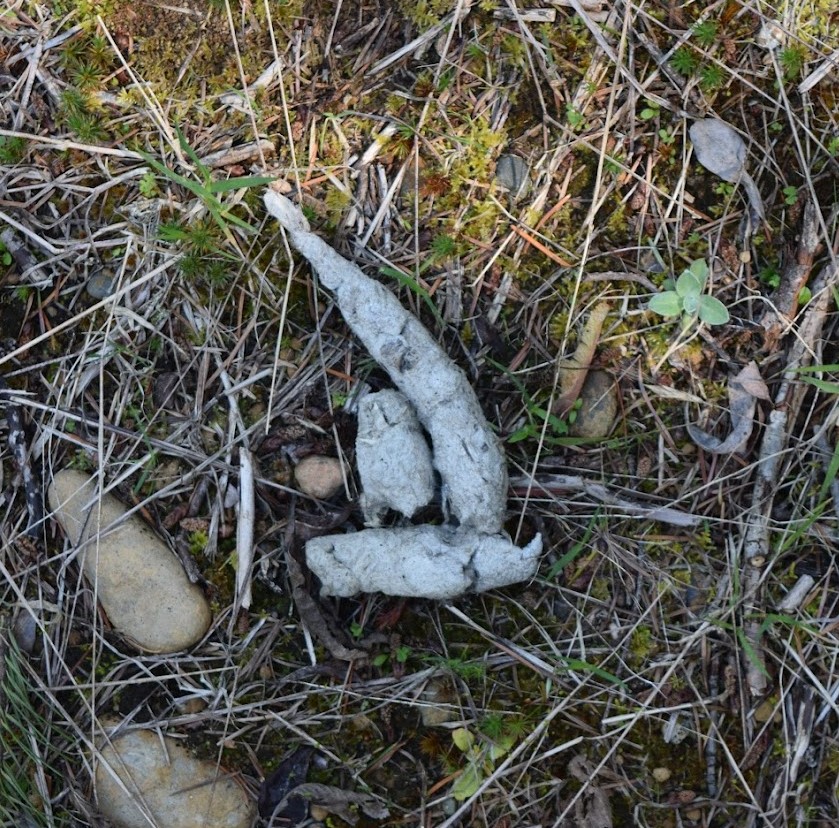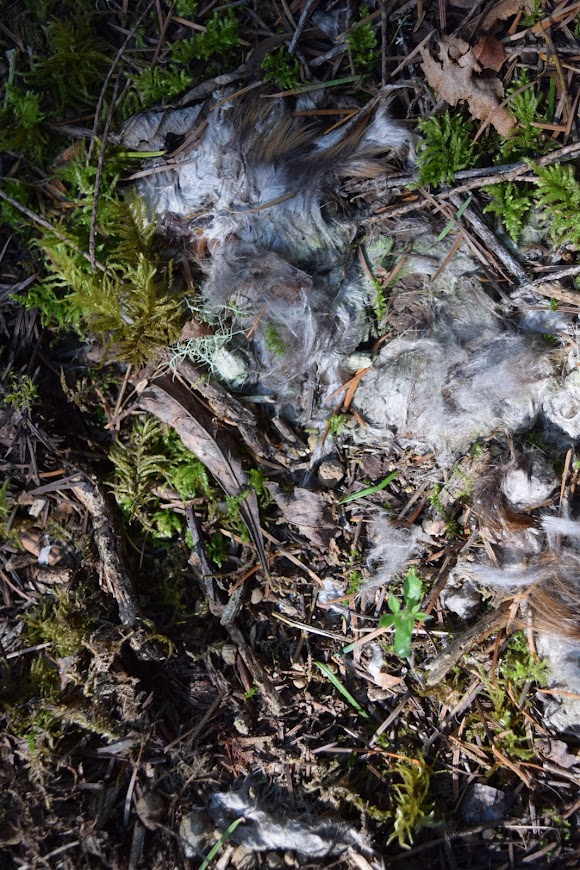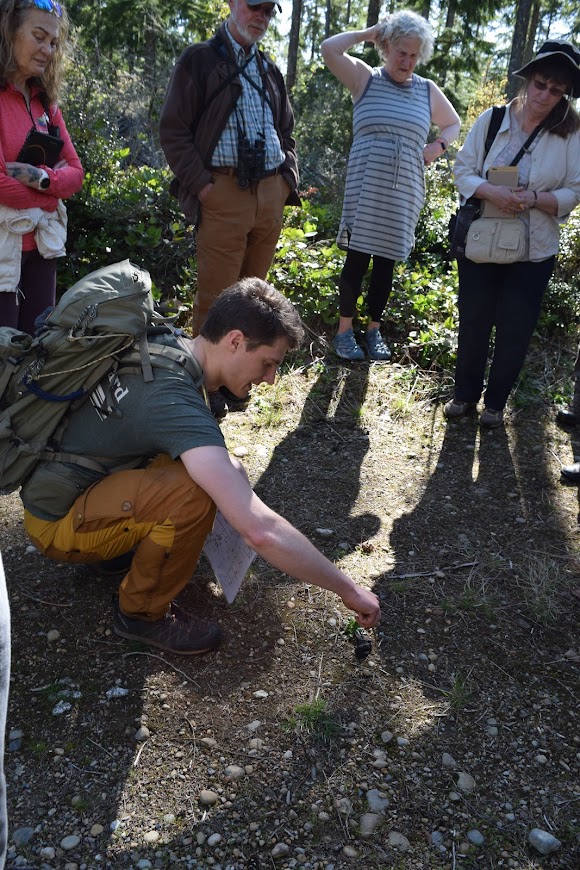On April 29, Great Peninsula Conservancy Stewardship Associate Ben Wymer led a three hour Wildlife Tracking Introduction at Newberry Woods Community Forest. During this Walk & Talk, Ben shared his passion for using animal signs to understand seldom seen animals on our GPC Preserves!
Ben explained how different groups of animals have different numbers of toes or paw shapes, such as ungulates (deer, elk, moose) with their fused digits or most mammals with their 5 digits. He demonstrated how the gaits and strides of different animals impacts the way their tracks show up on the ground. Some tracks can alternate, with each track paired with the opposite foot, or some animals such as rabbits have their hindfoot tracks in front of their front foot tracks!
The group found scat from three different species at Newberry Woods. The most common scat was that of coyotes who left their scat all along the trail to help mark their territory. Ben shared that that coyote scat is typically long, twisted, and tapered at one end like in the picture below. They also encountered a bobcat scrape, where the animal scraped some dirt into a pile to scent mark.
One of the animal signs that most impressed the group was a cougar scrape and a potential cougar kill! Digging around in the scat, Ben found coyote claws and a bunch of fur, which strongly implies a coyote met their end by cat. The scrape nearby, the size of both of Ben’s fists put together, helped Ben put this potential story together. Ben’s philosophy about animal tracking is that you need to use what you notice in your surroundings and logic to figure out what most likely happened with the sign you can find.
Check out these cool pictures below to see what else the group found!



